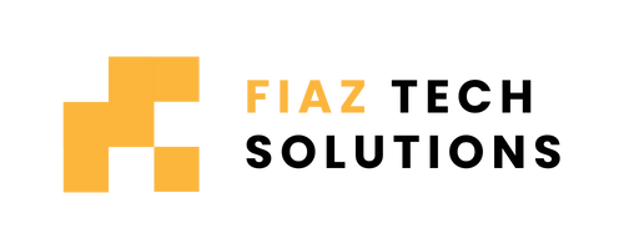Top 5 Costly Technology Mistakes Edmonton SMEs Make (and How to Avoid Them)
Maximize your software investment ROI and avoid common IT pitfalls. This guide for Edmonton SMEs outlines 5 costly technology mistakes and how strategic planning and proper scoping can lead to successful tech adoption.
Fiaz Mohammed
1/8/20254 min read


Technology. For small and medium-sized enterprises (SMEs) here in Edmonton, it promises so much: enhanced efficiency, business growth, a competitive edge. But let's be honest, the path to leveraging technology effectively is often fraught with potential pitfalls. Too many well-intentioned investments end up draining resources, causing frustration, and failing to deliver the expected returns. The dream of streamlined operations can quickly turn into a nightmare of mismatched software and underutilised tools.
As a technology consultant dedicated to helping Edmonton SMEs succeed, I've seen recurring patterns – costly mistakes that, with the right approach, are entirely avoidable. Understanding these common blunders is the first step towards making smarter, more impactful technology decisions. So, let's explore the top 5 costly technology mistakes I see Edmonton SMEs make, and more importantly, how you can steer clear of them.
Mistake #1: Diving In Without a Clear Plan (The "Ready, Fire, Aim" Approach)
One of the most frequent and damaging mistakes is jumping into a technology solution – whether it's new software or a system overhaul – without a well-defined strategic plan and thorough scoping. Enthusiasm for a new tool or pressure to "modernize" can lead businesses to bypass the crucial upfront work.
The Cost: This often results in vague objectives, scope creep that balloons budgets and timelines, solutions that don't align with actual business needs, and ultimately, a poor software investment ROI. You might end up paying for features you don't need or missing critical functionalities because requirements weren't clearly defined from the outset.
How to Avoid It: This is where my primary focus lies – meticulous planning and scoping. Before any significant investment, I work closely with your management and, crucially, your end-users. We conduct in-depth discovery sessions to map out your current processes, clearly define your desired outcomes, pinpoint specific requirements, and identify potential roadblocks. This builds a strong foundation, ensuring that any chosen technology is set up for success from day one. Think of it as drawing a detailed blueprint before building the house.
Mistake #2: Choosing the Wrong Software (Or Being "Sold" the Wrong One)
The software market is vast and often confusing. It's easy for Edmonton SMEs to get swayed by impressive sales pitches, the latest tech trends, or what a competitor is using, rather than what their unique business truly requires. Sometimes, the loudest vendor isn't the right partner.
The Cost: Implementing the wrong software is a direct hit to your finances and productivity. It can mean complex workarounds, frustrated employees, data migration nightmares, and even having to scrap the system and start over – a massive waste of time and money. This is a common IT pitfall for Edmonton businesses trying to grow.
How to Avoid It: My approach is independent and objective. I'm not tied to any specific software vendors, so my recommendations are based solely on your best interests. We start by defining your detailed requirements first. Only then do we research and evaluate potential solutions, ensuring they genuinely match your operational needs and strategic goals, not a vendor's sales quota.
Mistake #3: Ignoring Your End-Users (The "If We Build It, They Will Come" Fallacy)
A powerful piece of technology is useless if the team meant to use it either can't, won't, or finds it too cumbersome. Often, decisions are made at a high level without sufficient input from the people on the ground who will interact with the new system daily.
The Cost: Low user adoption is a silent killer of software investment ROI. It leads to wasted license fees, a decline in morale as employees struggle with tools not fit for their tasks, and a reversion to old, inefficient methods.
How to Avoid It: A user-centric approach is fundamental to my philosophy. I make it a priority to interview key stakeholders from all relevant departments. Understanding their current workflows, their pain points, and what they genuinely need from a technology solution is critical. By bridging the gap between management's vision and end-users' practical realities, we ensure the chosen technology not only meets business objectives but is also something your team will actually embrace and use effectively.
Mistake #4: Underestimating Integration Challenges
New technology rarely exists in a vacuum. It needs to communicate and work seamlessly with your existing systems – be it accounting software, CRM, inventory management, or other critical applications. Overlooking this can lead to significant operational headaches.
The Cost: Poor integration creates data silos, necessitates manual data entry between systems (hello, human error!), causes workflow bottlenecks, and can lead to an incomplete view of your business operations. Fixing these integration issues post-implementation can be complex and expensive.
How to Avoid It: During the planning and scoping phase, we map out your existing tech ecosystem and data streams. Integration capabilities are a key criterion when evaluating any new solution. We identify potential integration points and challenges early on, ensuring that any new technology will enhance, not fragment, your operational efficiency.
Mistake #5: Focusing on Features, Not Business Outcomes
It's easy to get dazzled by a long list of software features or the "latest and greatest" technology. However, more features don't always equate to more value, especially if those features don't directly contribute to solving a specific business problem or achieving a clear objective.
The Cost: Paying for unnecessary complexity can strain your budget and overwhelm your users. If the technology isn't clearly tied to improving a key performance indicator (KPI), reducing specific costs, or enabling a new revenue stream, its true value remains questionable.
How to Avoid It: My process always circles back to your core business goals. We define what success looks like before we even start looking at solutions. Every requirement, every feature considered, is weighed against its ability to contribute to those predefined outcomes. This ensures that your technology investment is strategic and aimed at delivering a tangible return.
Building a Smarter Tech Future for Your Edmonton Business
Investing in technology is no longer a luxury for Edmonton SMEs; it's a necessity for growth and competitiveness. But "investing" is the operative word – it implies an expectation of return. By being aware of these common mistakes and taking a strategic, well-planned approach, you can significantly increase the likelihood that your technology initiatives will be successful, empowering your team and driving your business forward.
If you're considering a new technology investment and want to ensure you're laying a strong foundation for success, I'm here to help. Let's talk about how an independent, objective planning and scoping process can help you avoid these costly pitfalls and make technology truly work for your business.
Book a free consultation with me to get started
Don't let outdated systems hold your team back any longer. Embrace a brighter future for your agency with technology designed for compassion, efficiency, and impact. Schedule your free demo today and experience the Transform difference.


Based in Edmonton, AB
